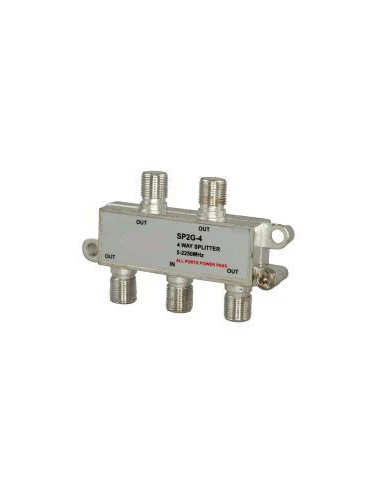2.4GHz high frequency RF splitter designed for use with splitting SWM satellite signals.
TV signal splitters are used to distribute a single input signal to multiple outputs, allowing you to connect multiple devices to the same signal source. When selecting a TV signal splitter, there are several specifications to consider:
Frequency range: This specifies the range of frequencies that the splitter can handle. It's important to choose a splitter that can handle the frequency range of your signal source and the devices you're connecting to it.
Number of ports: This refers to the number of output ports available on the splitter. Common options include 2, 3, 4, 6, and 8 ports.
Signal loss: This is the amount of signal loss that occurs when the signal is split between multiple outputs. Look for a splitter with a low dB rating, as this will result in less signal loss.
Impedance: The impedance of the splitter should match the impedance of the devices you're connecting to it. The most common impedance for TV signal splitters is 75 ohms.
Connector type: The splitter should have the appropriate connector type for your signal source and devices. The most common types are F-type connectors, which are used for coaxial cables.
Amplification: Some splitters come with an amplifier built-in to boost the signal strength, which can be useful if you have a weak signal or are connecting devices over a long distance.
Overall, when selecting a TV signal splitter, it's important to consider the frequency range, number of ports, signal loss, impedance, connector type, and any additional features like amplification that may be useful for your setup.


